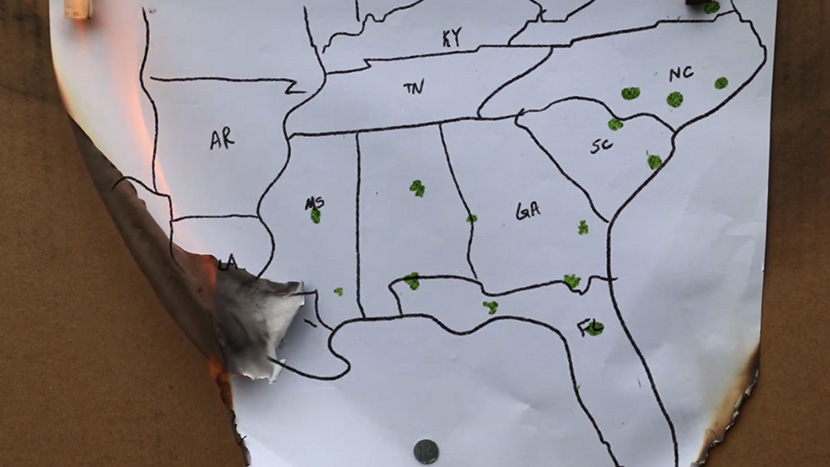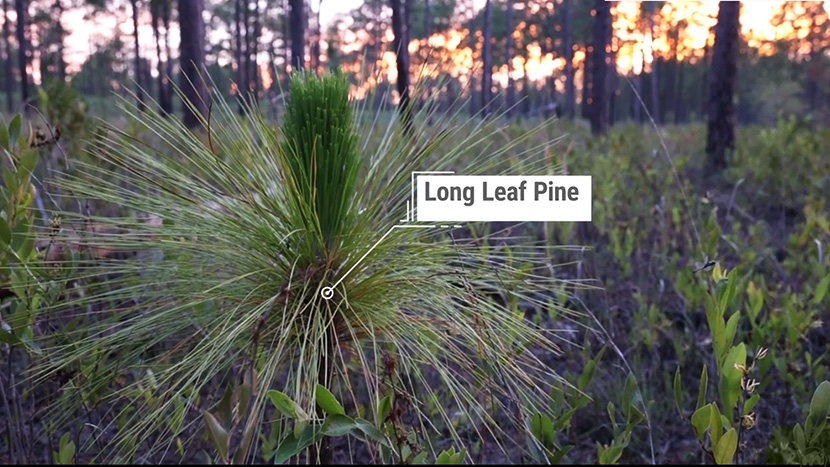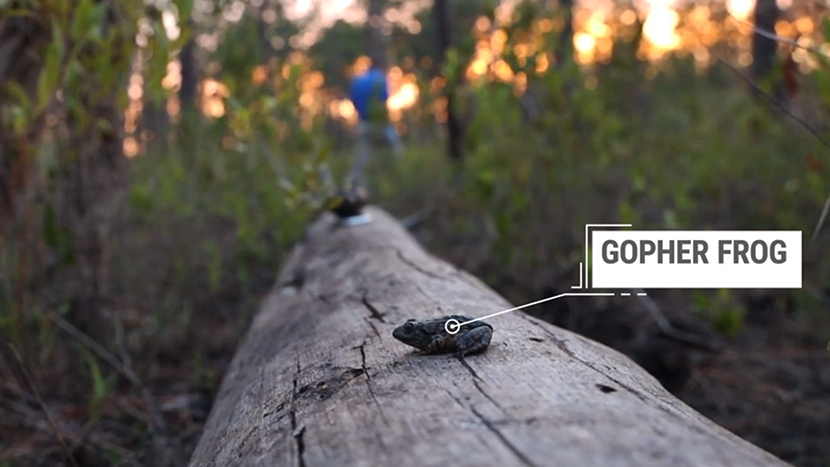How Burning a Forest Can Help Gopher Frogs
If you see wildfire smoke off in the distance, one of your first thoughts will probably be about concerns for the wildlife, however, that isn’t always the case. In fact, some ecosystems and their inhabitants actually benefit from fire, and are in more danger without it. You see, forests and grasslands that have evolved under conditions of frequent, low-intensity fires need that fire in order to recycle nutrients and regenerate native plant life. Furthermore, this fire can help native species thrive over the invasive ones. In the case of the Carolina gopher frogs, a bit of fire, and a little head start from a few passionate researchers, may be just what they need to save them from extinction.
What is a Gopher Frog?
The Carolina gopher frog (Rana capito) is a small brown frog that is found in the longleaf pine forests of the Southern United States. The IUCN red list has the species as a whole listed as vulnerable, but more local studies and reports show that it is under serious threat throughout much of its range.
Gopher frogs live in longleaf pine forests (or longleaf pine savannas) that can be found in the Southern United States. They get their unique name from the fact that they like to reside inside burrows dug in the ground by – you may not believe this but – gopher tortoises! The Gopher Tortoise is a tortoise that has adapted to burrow in order to hide underground in general, but especially during fires. Many other critters of the longleaf pine forests rely on their burrows. Gopher frogs seek shelter in these burrows, sitting at the entrance to catch flies and other insects to eat. Gopher frogs, like other amphibians, start out as eggs in the water, hatch as tadpoles, and eventually develop into adults with legs that are able to live on land. Once adults, gopher frogs can spend most of their adult life away from water.
Amphibians, like frogs, are crucial to ecosystem function. This is primarily because they are both important predators and prey in each of their life stages. However, since they rely on both land and water to survive, they tend to be more sensitive to environmental change. This is why amphibians like frogs are often used as bioindicators, which are living things that help us understand the health of an ecosystem. Unfortunately, the gopher frog is showing signs of trouble in much of its habitat.
Why are Gopher Frogs Endangered?
Habitat Loss
There are various reasons that the gopher frog is in decline, but the biggest threat is habitat loss. The longleaf pine forest of the Southern United States currently covers only about 3-5% of historic range. Development of residential and commercial areas as well as roads not only leads to less space for the frogs, but also causes problems with pollution, sediment and fertilizer runoff, and more.
Fire Suppression
The next threat is perhaps the most surprising. Something harming gopher frog populations is fire suppression! Looking at it simply, gopher frogs thrive in areas that burn more frequently. First off, the native vegetation that they and their insect prey rely on grows best when fires occasionally sweep through the landscape. Second, fire helps keep vegetation to a minimum, which allows for more wetland areas. If grasses and bushes become too plentiful, they soak up more water and encroach on pond edges, leaving less room for frogs to live and reproduce.
As mentioned above, wildfires can be harmful in many other places, but here it is part of the natural process. Now, wildfires can also cause problems in these fire-dependent ecosystems if they burn too frequently, or burn too intensely. This problem can happen when people have been suppressing fire for too long. No burning leaves more dry fuel (dead leaves, trees, sticks etc.) and causes bigger hotter fires. This is why we need controlled fires more often, so that the forest can live its life cycle without putting people or wildlife in danger. Additionally, it seems that drier and hotter conditions driven by climate change and too much habitat alteration are also changing fire intensity, but that is a whole other story for another day.
Introduced and Invasive Species
Gopher frogs are also harmed by introduced and invasive species. One major example is the introduction of fish into lakes and ponds, mostly for sport fishing. These fish that would not have been there naturally, eat frog eggs and tadpoles, reducing population numbers. Invasive fire ants are also a huge threat. It turns out that fire ant stings aren’t just annoying for people, as these ants are also voracious predators that are able to eat these little frogs.
Additional threats
Gopher frogs are also under threat from more factors such as:
- Pollution and runoff from roads and agriculture
- Sedimentation from roads causing various issues in waters
- Introduction of diseases
- Climate change
- resulting in altered precipitation patterns
- and increased temperature which facilitates amphibian diseases
What is Being Done to Help Gopher Frogs?
There are distinct efforts in different regions of the gopher frogs range but a notable program is the one run by the North Carolina Zoo. Their “Head Start Program” is a breeding program where eggs are collected in the wild and cared for in their most vulnerable stages, from egg to froglet, and later released into the wild. They are also breeding frogs in the zoo and releasing those froglets. The frogs are given a health check and marked with colored tabs indicating what year they were released. Next, they are released, hopefully to be found again next year.
Some frogs are even some given tiny radio telemetry tags to track them. With this data, the researchers can understand more of when and where they move, what areas they prefer, and even what is eating them. In 2023, this program is still running strong with over 1,600 frogs released into the wild.
In addition to breeding programs, habitat restoration and controlled burns are helping to restore natural vegetation so that the gopher frog population can thrive. Ironically, fire can also help reduce fire ant populations and stop other invasive species from taking over.
In Conclusion
Gopher frogs are a very unique and crucial inhabitant of longleaf pine savannas that need to be protected. Though they are under threat from many factors, such as habitat loss, fire suppression, and invasive species, there is hope. Programs to help restore natural habitat and breed and release frogs are helping to restore populations in North Carolina. Hopefully this research can serve as a model for other regions so that gopher frogs can increase across their range.



































































































